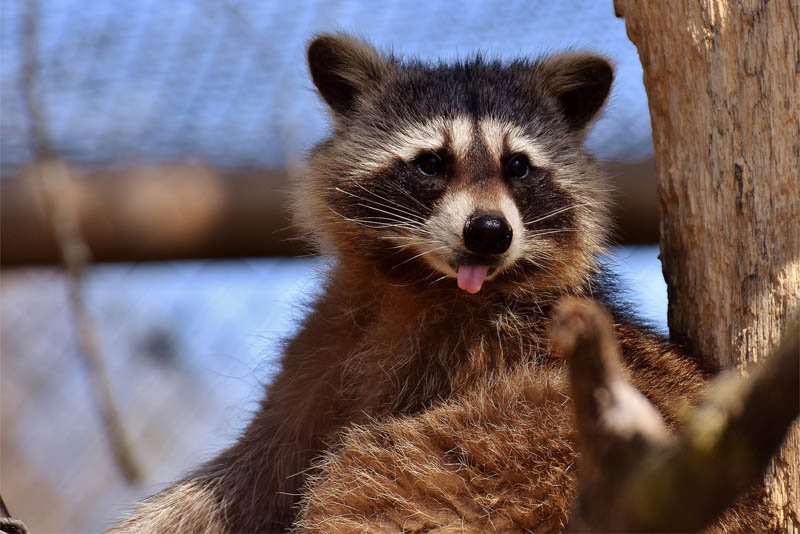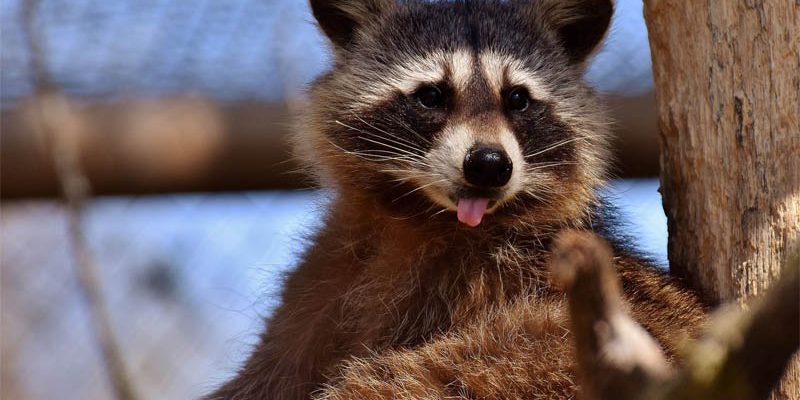
Imagine you’re sitting around a campfire, sharing stories. As the flames flicker, you hear rustling nearby. It’s a raccoon, peeking out from behind a tree, curious about what you’re up to. You probably didn’t know that these little guys have an incredible range of skills and behaviors. So grab your s’mores, and let’s explore some surprising truths about raccoons that make them one of nature’s most intriguing animals.
1. Raccoons Have Incredible Dexterity
You might be surprised to learn that raccoons have *remarkable dexterity* in their front paws. If you’ve ever seen a raccoon wash its food in water, you’re witnessing a complex behavior that showcases their skill. Their paws have an impressive range of motion, similar to human hands. This allows them to open jars, unlock cages, and even manipulate objects in their environment.
Raccoons have a special knack for problem-solving too! For instance, if a raccoon encounters a challenge, like a locked trash can, it can often figure out how to get inside after a bit of experimentation. They might turn the lid, pull at the handle, or even lean against it. This level of intelligence is why raccoons are often seen as clever little bandits!
2. They’re Naturally Curious Creatures
Curiosity might be one of the most defining traits of raccoons. They’re like the little explorers of the animal kingdom. You could say they embody the spirit of adventure! In the wild, they’ll investigate anything that piques their interest, whether it’s a strange noise, a shiny object, or even a new food source.
This curiosity isn’t just for fun. It’s a vital survival skill that helps them adapt to various environments. Raccoons can thrive in urban settings, often foraging around city parks, streets, and, yes, trash cans. Their desire to explore has allowed them to flourish in places far from their natural habitats.
3. Raccoons Are Excellent Problem Solvers
Here’s the thing: when it comes to problem-solving, raccoons are top-notch! Studies have shown that they can solve complex puzzles, often outperforming some primates. Imagine a raccoon facing a locked box with a treat inside. It might try multiple approaches, using its dexterity and memory to figure out how to access the reward.
This ability extends to their everyday lives, where they adapt to challenges like finding food or evading predators. It’s not uncommon for a raccoon to remember solutions to problems it’s encountered before. This kind of intelligence is a big reason why they often get into trouble; their inquisitive nature leads them to test their limits constantly.
4. Their Masks Aren’t Just for Show
You might think the raccoon’s black facial mask is just a quirky feature, but it actually serves a purpose. The dark fur helps reduce glare from bright light, allowing them to see better at night. This is particularly important since raccoons are nocturnal creatures, meaning they’re most active after sunset.
Additionally, their masks aid in their social interactions. Raccoons communicate using facial expressions and body language, and their masks can convey emotional cues to other raccoons. So next time you spot a raccoon, remember that their look is more than just a fashion statement!
5. Raccoons Have an Impressive Sense of Touch
If you thought raccoons were all about sight and hearing, let me explain why that’s not the case. They possess an extraordinary sense of touch, especially in their front paws. Their paws are covered with sensitive nerve endings, which allow them to feel textures and shapes with remarkable precision.
This sense is so acute that raccoons can differentiate between various objects without even looking. They often explore with their hands, feeling their way around their environment. It’s almost like they have a sixth sense guiding them! This tactile ability is essential when searching for food or navigating through their habitats.
6. They’re Omnivorous and Adaptable Eaters
Raccoons are true *omnivores*, meaning they eat both plant and animal matter. You might find them munching on fruits, nuts, insects, and even small animals. In urban areas, they’ll scavenge human food, ranging from leftovers to pet food left outside. Their adaptability in diet allows them to thrive in various environments, whether they’re in the wild or living near people.
This flexibility in eating habits also means they play a role in their ecosystems, helping to control insect populations and disperse seeds from the fruits they eat. So, every time they rummage through your trash, they’re not just being naughty; they’re playing a part in maintaining balance in nature.
7. Raccoons Have Unique Social Structures
Raccoons typically have a mixed reputation for being solitary or social creatures. Depending on the environment, they can be quite social. In urban settings, you might see raccoons living in groups called *gazes*, where they share resources and communicate with one another. These social structures can benefit them, especially when foraging for food or raising young.
However, they also value their independence. Raccoons like to establish their territory, and some individuals prefer solitary lifestyles. This mixture of social behavior allows them to adapt to changing environments, whether they need to rely on a group or venture out alone.
8. Their Playful Nature Is Essential
Have you ever watched raccoons at play? It’s one of the most delightful things to see! Their playful antics aren’t merely for enjoyment; play is crucial for their development and survival skills. Young raccoons engage in play to learn social skills, practice hunting, and develop the physical coordination they’ll need as adults.
Watching them tumble and chase each other is more than adorable; it’s an essential part of their growth process. This playful behavior helps them build relationships and reinforces their skills outside of predatory or survival settings.
9. Raccoons Can Be Found in Various Habitats
You might think raccoons are exclusive to forests or rural areas, but they’re actually quite adaptable. They can thrive in a wide range of habitats, from dense woodlands to urban cities. Raccoons can often be found near water sources, as they love to forage along riverbanks and lakeshores.
Their ability to adapt means they can live in regions across North America, Mexico, and even parts of Europe and Asia. This widespread presence is a testament to their *survival skills*. No matter where you go, there’s a good chance a raccoon is nearby, living its best life!
10. There’s More to Their Nocturnal Lifestyle
Raccoons are primarily nocturnal, which means they’re most active during the night. This lifestyle helps them avoid many predators and take advantage of the cooler temperatures. But there’s more to it than just escaping the heat. Being awake at night allows them to utilize their excellent night vision and heightened senses to forage efficiently.
Interestingly, their nocturnal habits also affect their social behavior and reproductive cycles. Most mating occurs in late winter or early spring, with kits born in late spring. The nighttime lifestyle of raccoons not only suits their physical attributes but also aligns with their survival strategies.
In conclusion, raccoons are fascinating creatures with a lot to offer. Their adaptability, intelligence, and quirky behaviors make them a joy to observe. So next time you catch a glimpse of one digging around your trash or exploring your backyard, take a moment to appreciate their incredible world. You might just find yourself with a new appreciation for these masked marvels!

